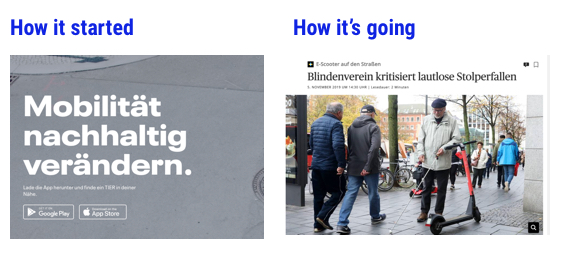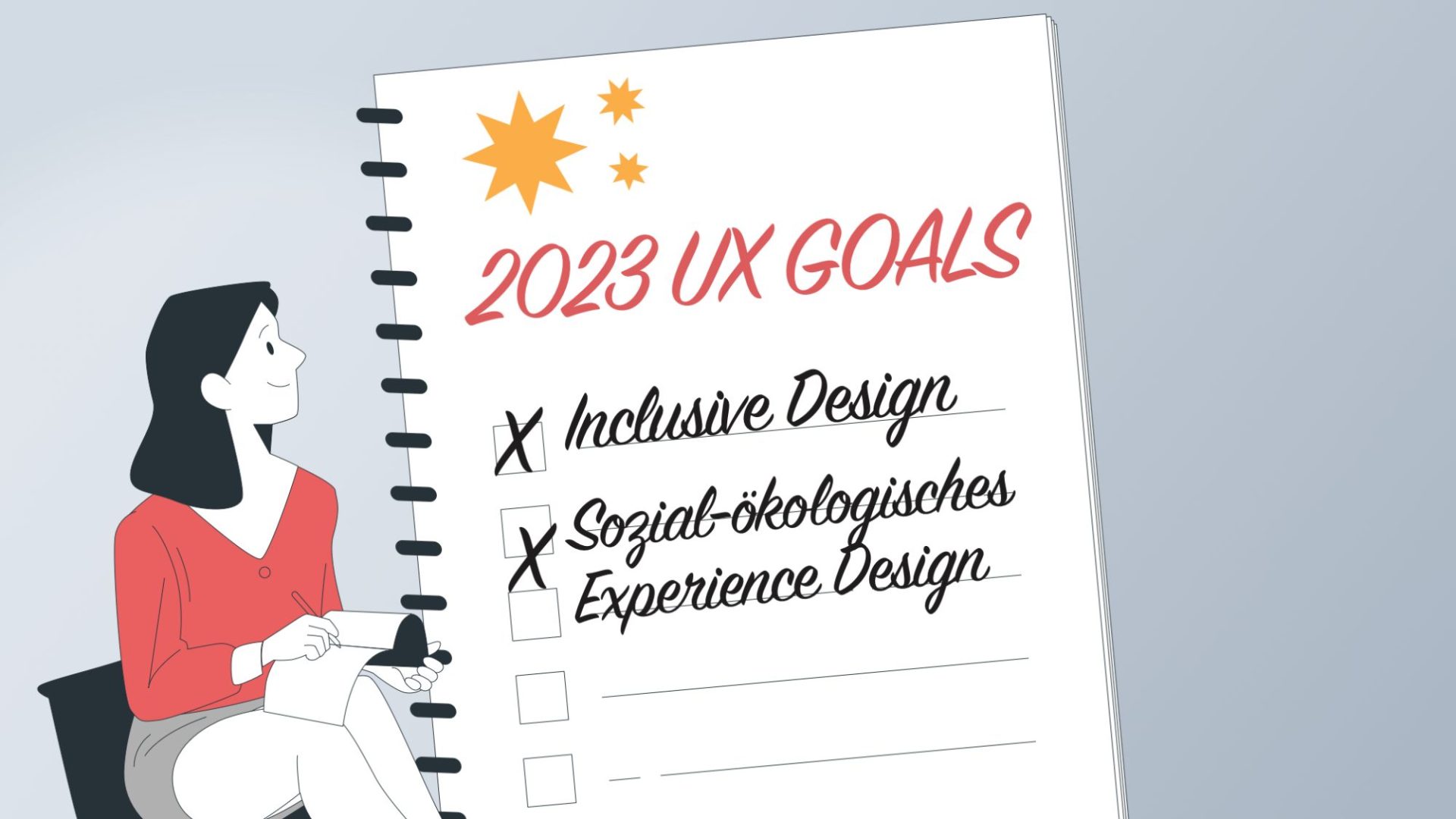For some time now, there has been a demand for product developers and designers to look beyond their desires, needs, and goals and create products centred on people, adding value in this sense.
In this context, an increasing number of terms circulate in the UX design world describing this attitude: user-centred design, human-centred design, humanity-centred design, value-centred design, or society-centred design – to name a few.
All terms commonly aim to raise awareness that design affects a “user” while also affecting an entire ecosystem around that user. This awareness is helpful because people and the products and services we design do not exist in a vacuum.
Inhaltsverzeichnis:
Despite the many terms and different interpretations of what these include, many of today’s discussions are not new and have always been a topic:
In Don Norman’s publication “User Centered System Design: New Perspectives on Human-Computer Interaction,” the social context of technology was already taken into account (Norman & Draper, 1986).
Another early thinker, Viktor Papanek, described in the book “Design for the Real World. Human Ecology and Social Change” the responsibility designers have in the first sentence: “There are professions more harmful than industrial design, but only a few” (Papanek, 1984).
We do not want to get hung up on terminology and strict distinctions such as user-centred design vs human-centred design. We assume that all these terms communicate that the social or societal responsibility of design must be considered during the design process. Because our work impacts many stakeholders: people who do not use our product or service, society as a whole, and the environment.
In our experience, the current practice focuses only on users and stakeholders in a narrow sense. The aim is to develop something that solves people’s problems – primarily by asking about the “needs” of users (“user needs”), and solutions are developed based on that. Since the company developing the products and services seeks growth and thus financial, measurable success with these products and services, the needs of their stakeholders play a dominant role. However, there is often a lack of inclusion of other spatial, social, or cultural contexts that may be affected by the product. These contexts are either underestimated or forgotten.
The times they are a-changin’
We are currently in a time of changing perceptions. The reasons for this can be manifold and certainly influence each other.
The impact of Ubicomp (the ubiquity of computers, the invisibility of systems) is now socially palpable and even a topic in popular TV series such as Black Mirror. As a result, the tech industry is increasingly discussing the implication of technology for society.
Social movements and activists such as Fridays for Future and the Last Generation are attracting attention by addressing the influence people, their way of life, and their products have on the planet. Obviously, the impact of technology is part of this discussion. Some of these discussions have harmed a product’s measurable success, such as the energy consumption of cryptocurrencies or NFTs.
Another possible aspect is the rise of the platform economy, whose on-demand and convenience services are incredibly practical and enjoyable for the individual but can have negative social-ecological impacts that affect us all. Examples include mobility service providers for e-scooters, free same-day deliveries, and more.
You don’t have to use these services yourself to be directly affected by them. Just think of the many e-scooters you have dodged on sidewalks in an urban environment. Services that affect uninvolved people and thus cause annoyances have almost certainly neglected spatial, social, and/or cultural contexts in their design.

The platform economy is only possible through technology which partially affects citizens to such an extent that personal resentment against these services.
Conclusion
Technical developments and various social movements have increasingly sensitized society to the impact of technology on the (social) environment. Designers and companies will have to respond to this. Design that considers social and societal needs when developing products and services is becoming increasingly important. It is about ensuring that technology meets the needs and requirements of the entire society, not just individual actors.
Outlook
We are preparing a proposal for a model that can help integrate the socio-ecological impact of products or services into the design process. Keep an eye out for that.
This article is part of the “What’s Coming, What’s Staying 2023” series. In this series, we would like to introduce some topics that are important to us for this year (and beyond), which are increasingly discussed in the industry and which are important for product and service development in companies – i.e., product managers, developers, and UX designers.
Sources and literature
Norman, D. A., & Draper, S. W. (1986). User Centered System Design: New Perspectives on Human-computer Interaction. Lawrence Erlbaum Associates.
Papanek, V. (1984). Design for the Real World. Human Ecology and Social Change. Thames and Hudson.
Rico Grimm: Warum NFTs eher nicht das Klima zerstören (Bitcoin aber schon) https://krautreporter.de/4200-warum-nfts-eher-nicht-das-klima-zerstoren-bitcoin-aber-schon (GERMAN)
Article image: People illustrations by Storyset





